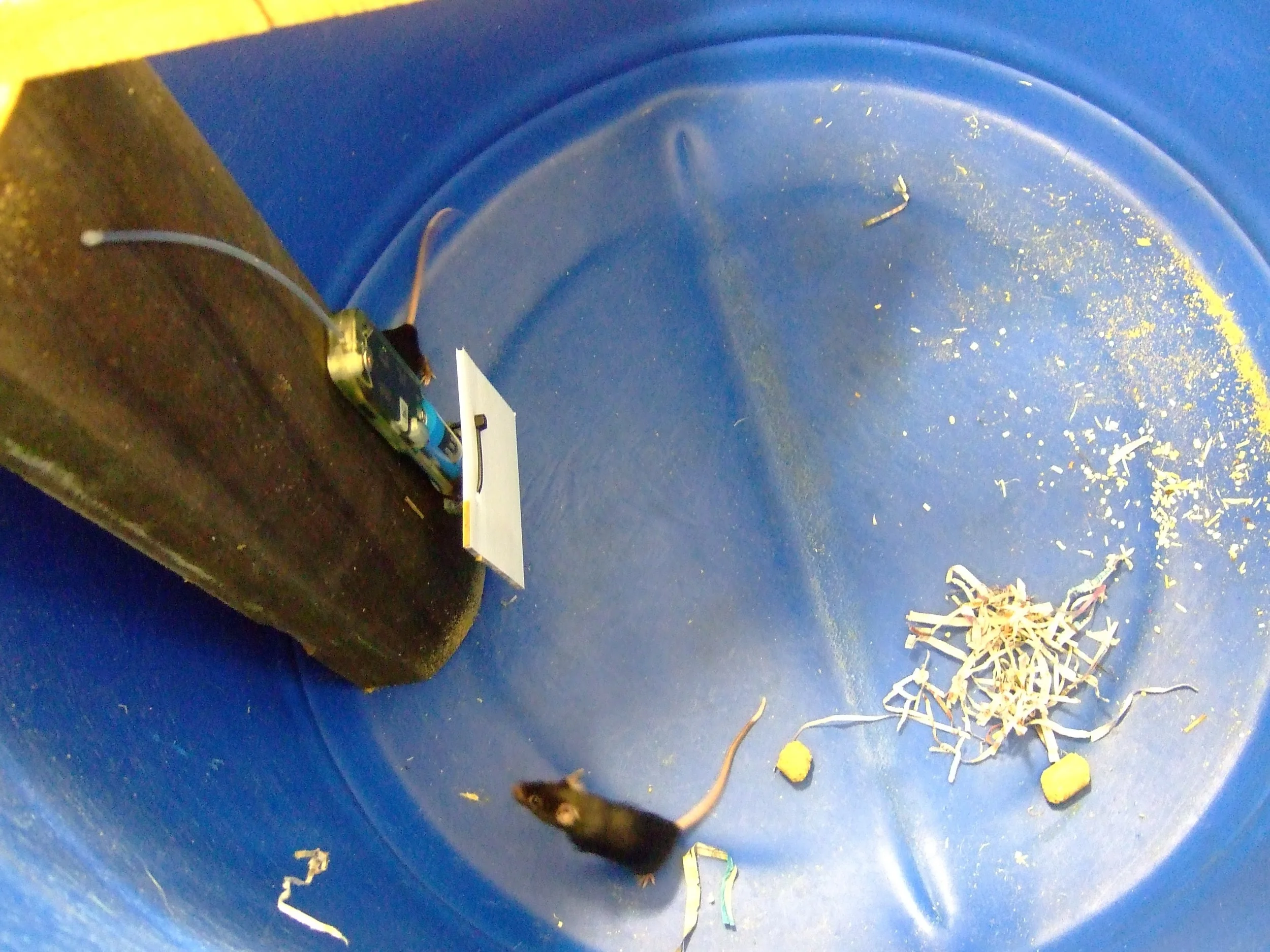Mice are outside the scope of ZIP’s model for predator control, and as such are not controlled at Bottle Rock. There are two main reasons for this:
Areas from which rats, stoats and possums have been removed (e.g. fenced sanctuaries such as Zealandia and some offshore islands) have achieved significant biodiversity gains even when mice are present; and
Complete removal as opposed to ongoing suppression of mice represents a challenge far beyond the removal of our three target species.
Because our detection and removal devices are not designed to target mice, we need to be able to exclude them from these devices to ensure optimal performance of the system.
Here are just a few of the mouse-related challenges we’ve overcome since we began our operations...
TUN 200 Trap Boxes
TUN200 trap box with mouse trap
Maintaining the effectiveness of food-based lures within the 'virtual barrier' system has been a major challenge, particularly in the face of very high mouse numbers during the 2014 beech mast.
Lures were lasting less than 2-3 days at the peak of the mast, with mice eating them before any other animal appeared to have access.
The servicing interval for the barrier lines is 3-4 weeks, meaning that some devices were left effectively un-baited for most of their time in the field.
In February and March 2015, a single mouse trap was installed into every TUN200 trap box (over 750 in total!), to reduce mouse interference with the lures. Over 90% of traps caught a mouse for the two checks following this enhancement. As an added bonus, these caught mice provided a fresh meat lure for both rats and stoats, with catches of both species increasing as a result.
This simple modification has significantly extended the life of the lure within the TUN200, and we believe the increase in system effectiveness (i.e. reduced leakage) since that addition can partly be attributed to this.
Automated food lure based detection system
Phil Bell inspects an early prototype of the automated detection system
ZIP is developing an automated detection system for deployment immediately behind the virtual barrier or at likely points of incursion, for early warning of any breaches.
The detection ‘nodes’ consist of a corflute ‘chew card’ attached to a transmitter fitted with a motion sensor, which detects animal chewing as it happens. This information is then passed along the detection line and on to the field team via satellite and text message for a timely response. This technology was originally developed as part of a pilot trial for an automated reporting system for live-capture traps.
Preventing mice from consuming the chew cards and falsely triggering the detection nodes has been a big challenge. Mice have proven to be far more agile than we first anticipated, with video footage recording their ability to jump horizontally 200 mm (at least) and climb vertical wires of varying thickness (up to 32 mm diameter).
This agility has led to a number of prototype mouse exclusion set-ups failing, including:
(1) 200 mm long horizontal wire protruding from a tree;
(2) the same wire set up centred in a sheet of polyethylene on the tree; and
(3) a 50 mm diameter metal disc fixed to vertical wire 200 mm above the ground.
Eventually, we developed a prototype with the following specifications:
4 mm diameter vertical wire
upside-down 'drawn' 50 mm diameter hemisphere welded at a height of 160mm above ground (acting as a 'hood'); and
chew card and node hung on a ‘pigtail’ bend.
Extensive field trials of this prototype suggest that mice are not able to interfere with the chew cards. However... with mice out of the way, we have identified the next big challenge: false triggering of the nodes generated by weka, tauhou (silvereyes) and wind!




